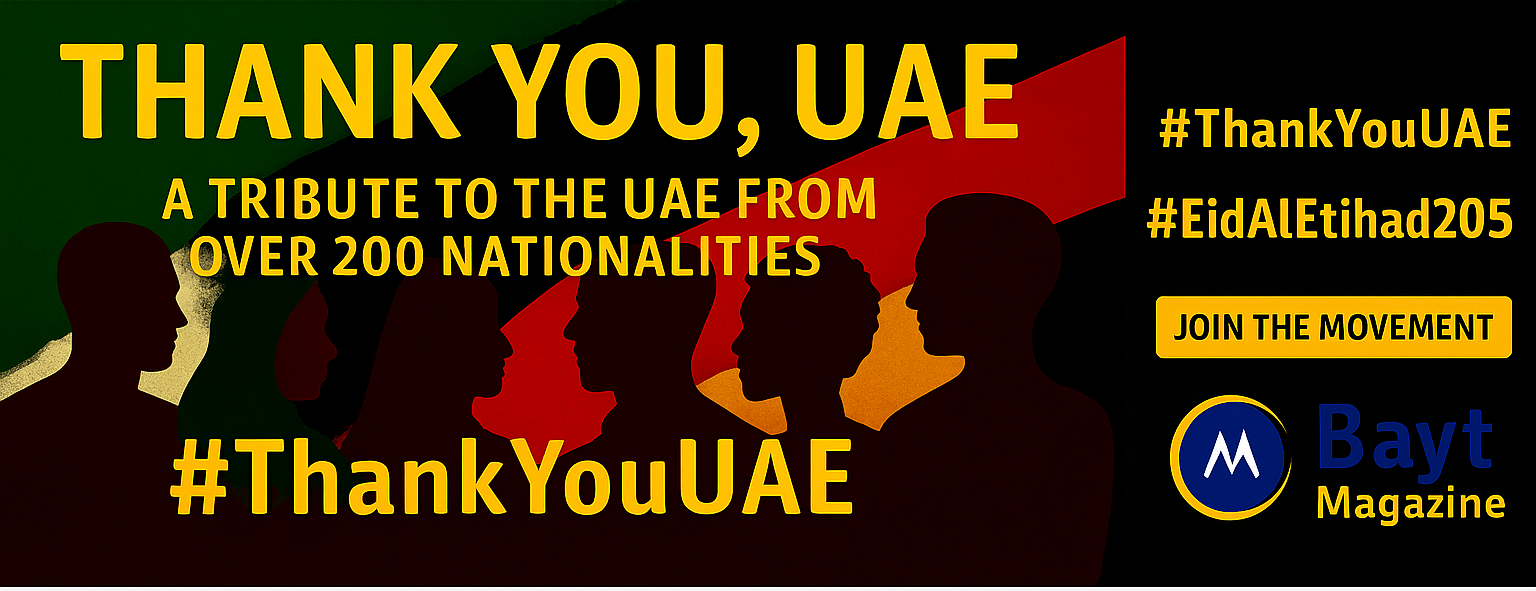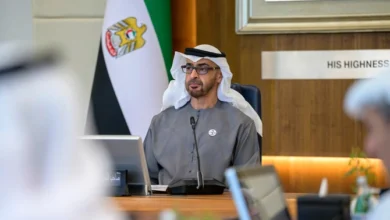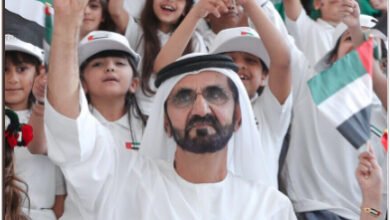
Dubai Ruler Celebrates Emirates’ Rise as World-Class Airline
Sheik Mohammed: Emirates stands today as one of the world’s leading airlines. The carrier evolved from a modest operation with just two aircraft in 1985 to become a global aviation giant. Dubai now connects directly to 152 cities worldwide through Emirates. The airline’s remarkable success shows in its numbers – more than 860 million passengers throughout its experience. A small $10 million investment grew into a powerful fleet of nearly 270 planes, making Emirates’ story an extraordinary achievement in aviation history.
The airline started with simple routes to Karachi and Mumbai but grew into one of the world’s most recognized carriers. Emirates news regularly shows how the airline serves over 150 destinations and flies more than 53 million passengers each year. Passengers today enjoy the results of four decades of ambitious development. Sheik Mohammed sees the airline as “one of our national sources of pride, one of the most important drivers of our development journey”.
Why did Dubai launch Emirates in 1985?
“We do not want an airport for Dubai; we want Dubai to be an airport for the world.” — Sheik Mohammed bin Rashid Al Maktoum, Vice President and Prime Minister of the UAE and Ruler of Dubai
Emirates airline’s story began during a pivotal time in Dubai’s aviation history. The emirate struggled to maintain its air connections, and the creation of a national carrier would revolutionize both Dubai and the global aviation world.
Gulf Air’s service cuts to Dubai
Dubai faced a challenging situation with air transportation in the mid-1980s. Gulf Air, owned by a consortium of Gulf states (Bahrain, Oman, Qatar, and Abu Dhabi), started reducing its Dubai services. The airline’s executives worried they only provided regional feeder flights for other carriers. The situation worsened after Gulf Air’s dispute with Pakistan. Dubai refused Gulf Air’s request to restrict Pakistan International Airlines’ flights because of its steadfast dedication to an open skies policy. Gulf Air retaliated by cutting its weekly Dubai flights from 84 to 39. This created a major gap in the emirate’s connectivity right when its economy needed growth.
Sheik Mohammed’s vision for independence
Sheik Mohammed bin Rashid Al Maktoum, UAE Minister of Defense at the time, saw a different path forward. Gulf Air asked Dubai to join their aviation group and accept them as Dubai’s flagship carrier. Sheik Mohammed rejected this offer to protect Dubai’s open skies policy that helped the emirate grow. His response became legendary: “By the way, gentlemen, I’m starting my own airline”.
Sheik Mohammed had a clear vision for Emirates from day one. His words echoed this ambition: “Emirates wants to be the best in the world. As easy as that. You are number one or you are nothing”. This mindset drove the airline’s future success. He laid out three basic principles:
- Look good
- Be good
- Make money
The airline needed to operate without government support beyond its original investment. This decision created a foundation of financial discipline and commercial success.
Maurice Flanagan’s mission to build a new airline
Sheik Mohammed chose Maurice Flanagan, dnata’s managing director (Dubai’s travel agency and airport services company), to bring his vision to life. Flanagan started learning about establishing Dubai’s airline in 1984.
His detailed business plan came together by December 1984, and they named the new venture “Emirates”. March 1985 brought Flanagan a bold challenge: launch a working airline in 5 months with just AED 36.72 million as seed funding.
Flanagan learned he would get “no subsidies or aeropolitical protection under Dubai’s open skies policy”. Despite these limits, Emirates took off on October 25, 1985. The first flights left Dubai International Airport to Karachi in a Boeing 737 and to Mumbai in an Airbus 300. Pakistan International Airlines leased both aircraft.
Flanagan returned to Dubai after the first flight and said Emirates had “off to a good and promising start”. He might not have known then that he helped create what would become a global aviation giant.
How did Emirates take off with limited resources?

Image Source: Facebook
Emirates started its remarkable story with just AED 36.72 million and five months to launch. The airline faced huge operational challenges right from the start. The path to success began when they found a creative solution to their biggest problem: getting aircraft.
Leasing aircraft from Pakistan International Airlines
Pakistan International Airlines (PIA) played a vital role in Emirates’ early operations. The new carrier couldn’t buy its own fleet right away, so they wet-leased two aircraft from PIA. A Boeing 737-300 and an Airbus A300 B4-200 landed in Dubai on October 20, 1985, just before scheduled operations began.
PIA’s support went far beyond just aircraft. They offered free training facilities for cabin crew at Karachi Airport. The core team from PIA included flight crews, ground staff, engineers, and technical experts. This partnership became vital since Emirates had to operate without government subsidies or special aeropolitical protection.
First flight details and crew stories
Emirates took to the skies on October 25, 1985, with two inaugural flights: EK600 to Karachi and another to Mumbai. The Karachi flight still uses the same code today. It departed at exactly 11:45 AM after a ribbon-cutting ceremony. The flight had 11 crew members, including four women who wore what would become Emirates’ iconic uniforms.
PIA’s Captain Fazle Ghani and co-pilot Captain Ejaz ul Haq flew the first flight to Karachi. The crew faced just one small issue – some pilots’ hats were too big. “They looked quite funny,” Captain Ghani said later. The two-hour trip to Karachi went smoothly. Passengers received flower garlands after landing, and the aircraft returned to Dubai that same day.
Captain Mian shared his memories: “On the 18th of October, a group of 100 pilots, flight and aircraft engineers, maintenance staff, among others all came to Dubai to initiate the planning stages, and we began test flights to ensure everything would operate to plan”. Maurice Flanagan declared Emirates had made “a promising start” after the first commercial flight.
Initial routes and ticket pricing
Emirates’ service looked very different back then. Passengers got paper tickets and could carry 20kg of baggage. A round-trip economy ticket cost about AED 1,498.15.
The airline carried around 260,000 passengers and 10,000 tons of freight in its first year. Their network grew quickly to include:
- 1986: Amman, Colombo, Cairo, and Dhaka
- 1987: Malé and Frankfurt, plus Istanbul
- 1988: Damascus
- 1989: Jeddah and Kuwait
Emirates managed to keep growing at 30% each year during its early period. This rapid growth caused Gulf Air’s profits to drop by 56% in Emirates’ first year. Gulf Air lost money the following year.
The airline bought its first aircraft, an Airbus A310 (registration A6-EKA), in 1987. This purchase let them start daily non-stop flights to London Gatwick on July 6, 1987. Before this, besides the PIA-leased aircraft, Emirates used two Boeing 727-200s from Dubai Royal Air Wing.
What made Emirates a symbol of national pride?
Image Source: Gulf Today
Emirates has grown from modest roots to worldwide recognition and become much more than just UAE’s airline. “A bridge that connects people, cultures, and dreams” – these words by Sheik Hamdan bin Mohammed bin Rashid Al Maktoum perfectly capture its essence.
Emirates as a development driver
Emirates stands as a vital economic engine powering Dubai and the broader UAE economy. The airline group added AED 75 billion to Dubai’s economy in 2023, which represents nearly 15% of the emirate’s GDP and supports over 236,000 jobs. The aviation sector, spearheaded by Emirates Group and Dubai Airports, contributed AED 137 billion – equivalent to 27% of Dubai’s GDP. These numbers will grow substantially, with Emirates Group’s contribution projected to hit AED 144 billion by 2030, making up 24% of Dubai’s expected GDP.
Cultural and economic impact
Emirates has become a powerful instrument of soft power for the UAE, going beyond direct economic benefits. The airline represents Dubai and UAE globally through its vast flight network and mutually beneficial alliances with major football clubs like Arsenal, AC Milan, and Real Madrid. The UAE ranked in the top ten of the 2023 Brand Finance Global Soft Power Index as a result.
The airline’s influence runs deep throughout UAE’s economy. Dubai has taken bolder steps toward economic diversification compared to Abu Dhabi and other emirates that remained conservative in their approach. This approach makes sense given Dubai’s limited oil reserves, with Emirates playing a central role. The airline’s stability and success have helped transform Dubai from an oil-dependent economy into a thriving hub for tourism, trade, and business.
Leadership’s continued support
The government’s dedication to Emirates remains rock-solid. Sheik Hamdan bin Mohammed highlighted the airline’s “strategic importance to the Dubai and UAE economy” during the pandemic challenges in 2020, stating that “the Government of Dubai is fully committed to supporting Emirates airlines in the current critical period”. This steadfast dedication shows how vital Emirates is to the national identity.
Sheik Mohammed bin Rashid Al Maktoum emphasized this point: “Today, Emirates is one of our national symbols of pride, a key driver of our development journey, and one of the most important airlines in the world”. He thanked Sheik Ahmed bin Saeed Al Maktoum and the airline’s 100,000+ employees “who work day and night to keep Emirates Airlines an unprecedented Emirati success story”.
How did Emirates scale into a global airline?
Image Source: Boeing Mediaroom
“Dubai International (DXB) is a global success story that reflects the UAE’s ability to transform bold ambitions into reality. Consistently ranked as the world’s busiest airport for international passengers, its record annual passenger traffic this year is a testament to the relentless pursuit of innovation and excellence that continues to shape the UAE’s progress.” — Sheik Mohammed bin Rashid Al Maktoum, Vice President and Prime Minister of the UAE and Ruler of Dubai
Emirates has transformed from a small regional carrier into a global aviation powerhouse through its bold expansion plans. The airline now operates over 3,000 weekly flights across six continents and ranks as the world’s third-largest airline by scheduled revenue passenger-kilometers flown.
Fleet modernization and expansion
Emirates’ growth centers on an unprecedented fleet update program worth billions of dollars. The airline launched the largest fleet update project in aviation history, investing AED 18.36 billion to upgrade 219 aircraft—110 Airbus A380s and 109 Boeing 777s. This massive project started in November 2022. Emirates’ Engineering team manages the entire process and completes interior refurbishments of one wide-body aircraft every three weeks.
The airline continues to grow its fleet with next-generation aircraft. Orders include 65 Airbus A350-900s, 30 Boeing 787s, and 205 Boeing 777Xs. The A350 leads this major fleet modernization effort, and these aircraft now serve 10 global destinations.
Destination growth to 85+ countries
Emirates connects 133 destinations in 85 countries as of February 2025. The airline dominates South and Southeast Asian routes and links Dubai with more international destinations in these regions than any other Middle Eastern carrier.
New routes to Hangzhou, Shenzhen, Da Nang, and Siem Reap have expanded Emirates’ Chinese mainland network to five gateways. Mutually beneficial alliances have helped Emirates double its reach beyond its network, offering travel options to nearly 1,700 additional cities.
Emirates Airlines news on global rankings
Emirates got several prestigious awards in 2024-2025 that cement its position among aviation’s elite. The airline won the 2024 APEX World Class Airline award for excellent guest experience and customer service. Emirates also claimed fourth place in the 2025 Skytrax World Airline Awards, based on feedback from over 22 million passengers worldwide.
Telegraph Travel named Emirates the ‘World’s Best Airline’ among 90 global carriers in a detailed study. The assessment looked at more than 30 criteria including punctuality, baggage allowance, route network, and fleet age. These awards show how Emirates successfully scaled its operations while delivering exceptional service.
What lies ahead for Emirates in the next decade?
Image Source: Kanebridge News Middle East
Emirates plans to revolutionize its global operations with major expansion and breakthroughs in the next decade.
New aircraft orders and sustainability goals
Emirates made a landmark AED 190.94 billion investment to grow its fleet with 205 Boeing 777X aircraft. This includes 55 777-9s and 35 777-8s. The company will welcome its first 777-9 in 2025. Their fleet should reach about 350 aircraft by the early 2030s. The airline shows steadfast dedication to the aviation industry’s goal of net zero carbon emissions by 2050. The company now uses the IATA Environmental Assessment system. This covers flight operations, corporate activities, and aircraft manufacturing.
Digital transformation and passenger experience
Emirates invested AED 7.34 billion to boost its inflight experience. The company started a major program to modernize over 120 aircraft with new interiors. Passengers will use biometric boarding at 20 self-boarding gates. Most travelers (70%) now check in online or through mobile apps. The airline develops immersive extended reality platforms through collaboration with Amazon Web Services. These platforms help with training and customer service.
Maintaining Dubai’s aviation leadership
Dubai’s economic agenda D33 includes Emirates’ plan to link the city with 400 more destinations over the next decade. The expanded Al Maktoum International airport will process 12 million tons of cargo each year. This will make it the world’s largest hub by capacity.
Emirates Airlines stands today as evidence of Dubai’s ambitious vision and steadfast dedication to excellence. A small operation that started four decades ago with two leased aircraft flying to Karachi and Mumbai has grown into one of the world’s most recognized carriers. This remarkable trip from modest beginnings to global aviation powerhouse shows the extraordinary results of visionary leadership meeting strategic execution.
Sheik Mohammed’s original $10 million investment produced returns way beyond financial metrics. The airline connects Dubai directly to 152 cities across six continents and carries over 53 million passengers annually. On top of that, Emirates contributes approximately AED 75 billion to Dubai’s economy—nearly 15% of the emirate’s GDP—while supporting more than 236,000 jobs.
Emirates overcame its limited resources and challenging constraints through creative solutions and strategic collaborations. Pakistan International Airlines provided significant support during those early days with aircraft and crew training. The airline expanded rapidly at 30% annually during its formative years.
Emirates has become much more than a transportation company. The airline serves as a powerful symbol of national identity and pride for the UAE. Through its extensive network and strategic sponsorships, Emirates acts as a global ambassador and an instrument of soft power for the nation.
Emirates shows no signs of slowing down. The airline’s bold plans include a historic AED 190.94 billion investment in 205 Boeing 777X aircraft, among sustainability commitments and digital transformation initiatives. Emirates wants to connect Dubai to 400 additional destinations over the next decade to cement the city’s position as a global aviation hub.
This extraordinary success story ended up reflecting Dubai’s transformation of bold ambitions into reality. From Sheik Mohammed’s defiant response to Gulf Air—”I’m starting my own airline”—to today’s fleet of nearly 270 planes, Emirates shows how vision, determination, and strategic planning can create a world-class organization that changes an industry while elevating a nation onto the global stage.




